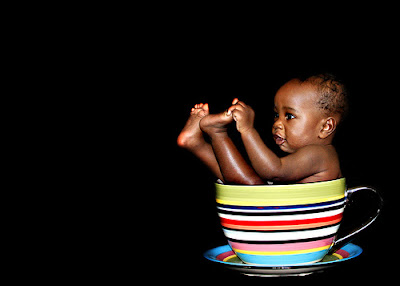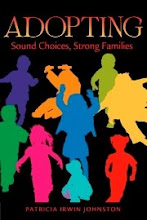 Nothing, actually. Especially if you're part of a new niche market---a baby planner.
Nothing, actually. Especially if you're part of a new niche market---a baby planner.
Martin Bashir’s report on ABC’s Nightline this evening was one of dark contrasts. On the one hand were reports of the suffering of hundreds of thousands of people in Myanmar in the aftermath of Cyclone Nargis. The death toll is estimated at 38,000. In the same week, China was hit by a three-minute-long, magnitude 7.9 earthquake, called the worst natural disaster in more than 30 years. 15,000 are estimated dead. While American’s are eager to help, aid is slow in arriving or even being refused.
While children are starving and dying on other side of the world, back home in New York and Los Angeles, a new niche market has sprung up to gobble the dollars of eager expectant mothers by helping them with everything from shopping to maternity clothes to setting up gift registries, and even hiring baby nurses and nannies. Enter the Baby Planners, who for $150+ an hour, will test baby-to-be’s toys for lead and arrange for mommy-to-be’s “bump” to be photographed for posterity. Apparently, the prospect of motherhood is a daunting proposition. Said one expectant mom, "It's extremely overwhelming. I just had no idea what to expect, there are so many different marketing messages out there about all of these products that you need, and the way to do things. And, at this point, you don't know what to believe." What’s wrong with this picture?
Baby Planners such as InBloom or The Nest Baby will have no problem recommending popular or unusual names to the clients, however. The Social Security Administration released the most popular American baby names of 2007 just in time for Mother’s Day. After months of nail biting, I’m incredibly (excessively?) excited to bring you the top ten:
|
| Boys | Girls |
| 1 | Jacob | Emily |
| 2 | Michael | Isabella |
| 3 | Ethan | Emma |
| 4 | Joshua | Ava |
| 5 | Daniel | Madison |
| 6 | Christopher | Sophie |
| 7 | Anthony | Olivia |
| 8 | William | Abigail |
| 9 | Matthew | Hannah |
| 10 | Andrew | Elizabeth |
Emily has topped the list since 1996. Jacob has done so since 1999. Elizabeth returns to the top ten after a two-year absence.
In addition to a list of the 1,000 most popular boys’ and girls’ names for 2007, the website has a list of the top 100 names for twins born in 2007. Jacob and Joshua are again the most popular twin’s names.
The Social Security website offers lists of baby names for each year since 1880. Social Security started compiling baby name lists in 1997.
Although “American Idol’s” Sanjaya did not influence this year’s list, other young celebrities influenced the naming of American children. Shiloh, the youngest daughter of Brad Pitt and Angelina Jolie, debuted on the list at number 804. Maddox, the name of their oldest child, has seen steady gains since first appearing on the list in 2003 at number 583 and now ranking at number 226. Suri, the name of Tom Cruise and Katie Holmes' daughter, did not make the list. But Britney Spears' second son is named Jayden, which ranked at number 18. Miley is new to the girls’ list this year, entering fairly high at number 278, attributable to the popularity of teen sensation Miley Cyrus.
For reasons likely to puzzle baby name experts around the world, American parents have become infatuated by names, particularly for their sons, that rhyme with the word “maiden.” These names for boys include: Jayden (No. 18); Aiden (No. 27); Aidan (No. 54); Jaden (No. 76); Caden (No. 92); Kaden (No. 98); Ayden (No.102); Braden (No.156); Cayden (No.175); Jaiden (No.191); Kaiden (No. 220); Aden (No. 264); Caiden (No. 286); Braeden (No. 325); Braydon (No. 361); Jaydon (No. 415); Jadon (No. 423); Braiden (No. 529); Zayden (No. 588); Jaeden (No. 593); Aydan (No. 598); Bradyn (No. 629); Kadin (No. 657); Jadyn (No. 696); Kaeden (No. 701); Jaydin (No. 757); Braedon (No. 805); Aidyn (No. 818); Haiden (No. 820); Jaidyn (No. 841); Kadyn (No. 878); Jaydan (No. 887); Raiden (No. 931); and Adin (No. 983). This startling trend was present, but less pronounced, with girls names: Jayden (No. 172); Jadyn (No. 319); Jaden (No. 335); Jaiden (No. 429); Kayden (No. 507); and Jaidyn (No. 561). Social Security spokesman Mark Lassiter indicated that the agency would resist any legislative efforts to standardize the spelling of these names.
Experts also may be surprised by the extent to which American parents are naming their daughters after spiritual and philosophical concepts. One of the most popular names for girls (rising this year to number 31) is Nevaeh, which is “Heaven” spelled backwards. The variant Neveah came in this year at number 891 and Heaven is number 263. Also represented were: Destiny (No. 41); Trinity (No. 72); Serenity (No. 126); Harmony (No. 315); Miracle (No. 461); Charity (No. 673); Journey (No. 692); Destini (No. 914); and Essence (No. 930). Cutting against this trend was Armani (No. 971).
American parents were far less likely to name their sons in this way, although the 2007 boys’ list does include Sincere (No. 622) and Messiah (No. 723).
Finally, Commissioner Astrue expressed his approval that Elvis has risen 85 spots from number 761 to number 676 and noted, “It is further proof that Elvis is not dead.”














